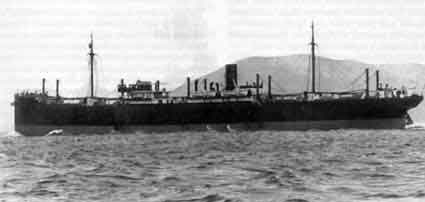
Hoki Maru
The 7,112 ton M/V Hauraki (New Zealand) was built in 1921 in Scotland as a passenger and cargo ship. On 4 July 1942 the M/V Hauraki left Fremantle (Australia) bound for Colombo in Sri Lanka. She was on her way from New Zealand to the Middle East with a load of war supplies. On 12 July 1942 at about 2150, the MV Hauraki was ambushed by the armed merchant cruisers Hokoku Maru and Aikoku Maru and captured. She was taken to Singapore and the crew sent to Ofuna Camp.
On 17 February 1944, she was attacked by Essex TBF's and torpedoed later in the day by Bunker Hill planes and left to burn. She was on fire and smoking heavily when last seen on the first day. By the next morning, she was gone.
The Hoki Maru is a deep dive. The superstructure is at about 33 meters with the deck at 45. The sandy bottom is at 53 meters (at N7 21.218 E151 54.794). The bridge and midship are devastated, but there are quite a few artifacts. In the aft hold is an array of construction equipment. The 2 levels of No 5 hold are loaded with Caterpillar tractors, dump trucks, a steam roller and motor scraper. There are bombs with their fuses and aircraft engines in the No 4 hold.
A note to divers: Skin burns and stings have been reported in the bottom of hold No 4.

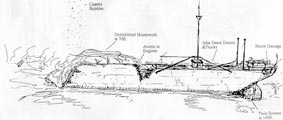
Lantern and bottles.
Me exploring the damage.
Lunch Tour of Dublon Island
After the Hoki dive, we headed to a small harbour (N7 22.407 E151 53.173) on Dublon Island where Nick, one of the dive guides, gave us a short tour of the island to show us the sights.
A memorial. I am not 100% sure who put it up, but if my memory serves me correctly, it has Japanese symbols on it.
Our dive guide Dave taking a break.
This tunnel was cut into the mountain as a route to the Japanese Communications Installations that were here during the war.
A view from inside the tunnel. Note the water on the floor, the walls are leaking water constantly.

Nick explaining why this causeway was built by the Japanese.
After Nick's history, we headed back. This is from the middle of the causeway looking back the way we came.
Can anyone read Japanese? Can you let me know what this says?
Rio De Janerio Maru
With a displacement of 9,627 tons, the Rio De Janerio was built in Japan in 1930 as an 8 deck passenger liner. Requisitioned for the war effort in 1940, she was converted to a submarine depot (sub tender) and assigned directly to the Combined Fleet. The conversion included the installation of 2 artillery guns and anti aircraft guns. On February 17, 1944, it appears that the Rio De Janerio Maru was attacked and hit by planes from the USS Yorktown and USS Bunker Hill. She sank overnight.
With a maximum depth of 34 meters and lying on her starboard side (at N7 18.266 E151 53.670), the Rio De Janerio Maru is a great external dive. However, deterioration over the years has made a penetration of this wreck hazardous and divers are urged to take utmost care when penetrating this wreck.
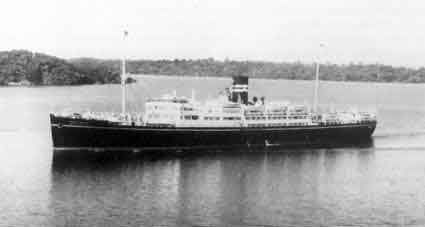
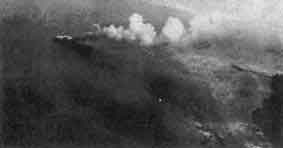
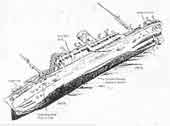
The propellers of the Rio De Janerio are an awesome sight.
Thousands of bottles, probably carrying Saki before the ship went down, litter the decks.
Remember that the ship is on her starboard side, these crates of bottles seem to be stacked neatly on the wall.
Come out here little fella... I just wanna play.
Back to dives page.